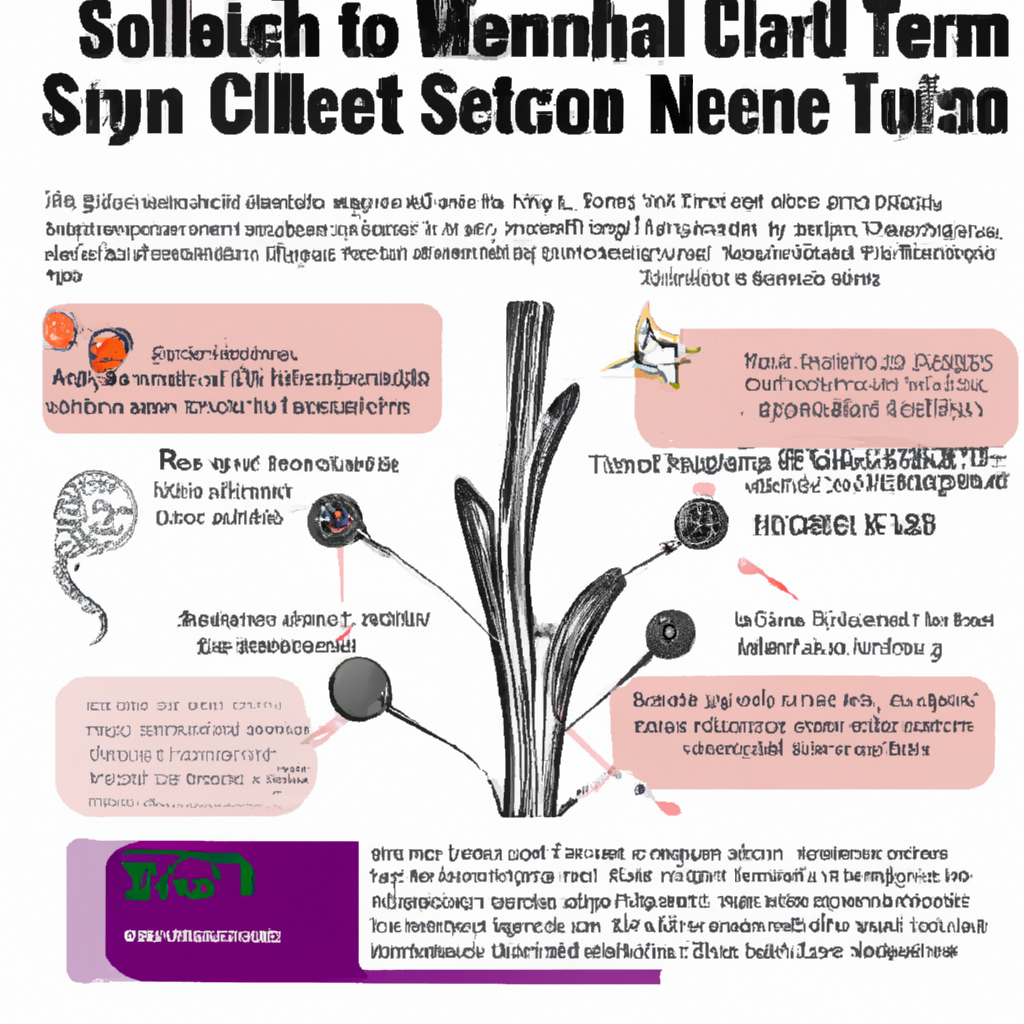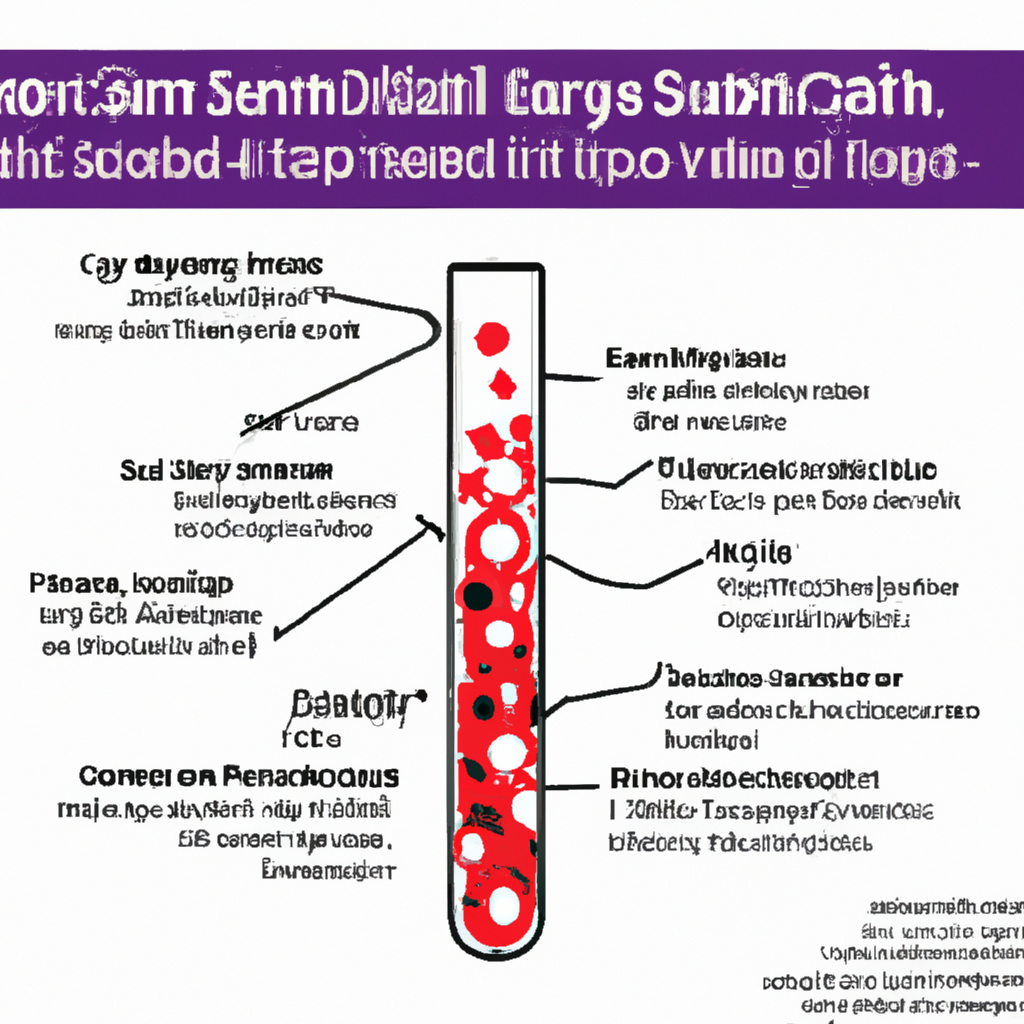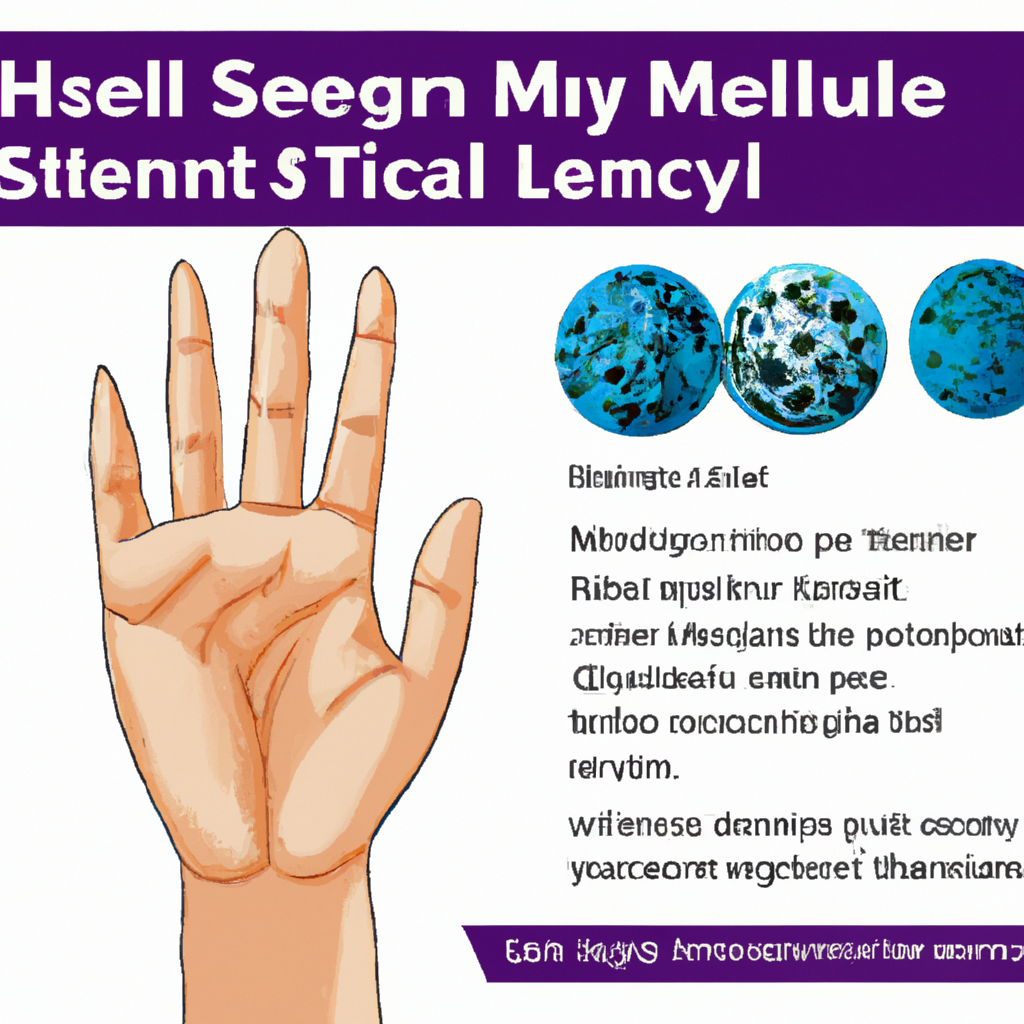If you’re curious about the most common sources of stem cells used in Malaysia, you’re in the right place. Stem cell therapy has gained significant attention in recent years, offering promising potential for treating various diseases and conditions. In this article, we’ll explore the diverse sources of stem cells that are commonly utilized in Malaysia. From embryonic stem cells to adult stem cells, we’ll delve into their origins and applications, shedding light on the fascinating world of regenerative medicine. So, grab a cup of tea, sit back, and let’s embark on this journey together!
Embryonic Stem Cells
Definition and Characteristics
Embryonic stem cells are undifferentiated cells that are derived from the inner cell mass of a blastocyst, a very early stage of embryonic development. These cells have the unique ability to differentiate into any type of cell in the human body, making them incredibly valuable for scientific research and potential medical treatments. Embryonic stem cells are known for their self-renewal capacity, meaning they can divide and replicate indefinitely without losing their undifferentiated state.
Collection and Usage
The collection of embryonic stem cells involves the destruction of a human embryo, which has raised significant ethical concerns and controversies. In many countries, including Malaysia, there are strict regulations and guidelines surrounding the collection and usage of these cells, with a focus on obtaining informed consent from donors. Embryonic stem cells are primarily used in laboratory research to better understand human development and to develop potential therapies for a wide range of diseases and conditions.
Ethical Considerations
Due to the destruction of human embryos involved in the collection of embryonic stem cells, ethical considerations surrounding their usage are of utmost importance. Many people have ethical objections to the use of embryonic stem cells, as they believe that human life begins at conception and that destroying embryos is morally wrong. However, others argue that the potential benefits of embryonic stem cell research outweigh these ethical concerns, as they hold immense promise for regenerative medicine and the treatment of various diseases.
Adult Stem Cells

Definition and Characteristics
Adult stem cells, also known as somatic stem cells, are undifferentiated cells that are found in various tissues and organs throughout the body. These cells play a vital role in maintaining and repairing damaged or aging tissues. Unlike embryonic stem cells, adult stem cells have a more limited differentiation potential and can only give rise to certain cell types within their tissue of origin.
Sources of Adult Stem Cells
Adult stem cells can be obtained from several sources, including bone marrow, adipose tissue, peripheral blood, and dental pulp. Each source has its own unique characteristics and potential applications in regenerative medicine. For example, bone marrow stem cells are commonly used in the treatment of blood disorders and cancers, while adipose tissue stem cells show promise in tissue regeneration and cosmetic procedures.
Collection and Usage
The collection of adult stem cells is relatively less controversial compared to embryonic stem cell collection, as it does not involve the destruction of embryos. Adult stem cells can be collected through minimally invasive procedures, such as bone marrow aspiration or liposuction. Once collected, these cells can be cultured and expanded in the laboratory for further research or used for immediate medical treatments.
Umbilical Cord Blood Stem Cells

Definition and Characteristics
Umbilical cord blood stem cells are a type of adult stem cell that is found in the blood of the umbilical cord and placenta. These cells are similar to adult stem cells in their differentiation potential but have some unique advantages. Umbilical cord blood stem cells are considered to be more primitive and have a higher proliferation capacity than adult stem cells. They also have a lower risk of being rejected in transplant procedures.
Collection and Storage
The collection of umbilical cord blood stem cells is a non-invasive and painless procedure that occurs immediately after the birth of a baby. The umbilical cord is clamped and cut, and the blood is collected into a specially designed bag. The collected cord blood is then processed and cryopreserved for long-term storage. Cord blood banks, both public and private, provide the service of storing umbilical cord blood for future use.
Medical Uses
Umbilical cord blood stem cells have been successfully used in the treatment of various blood disorders, such as leukemia and thalassemia. They have the ability to repopulate the patient’s bone marrow and replace damaged or diseased cells. In addition to blood disorders, ongoing research is exploring the potential of umbilical cord blood stem cells in the treatment of neurological conditions, autoimmune diseases, and tissue regeneration.
Peripheral Blood Stem Cells

Definition and Characteristics
Peripheral blood stem cells, also known as hematopoietic stem cells, are a type of adult stem cell found in the circulating blood. These cells are responsible for generating new blood cells and play a critical role in the immune system. Peripheral blood stem cells have a high self-renewal capacity, allowing them to continuously produce new blood cells throughout a person’s life.
Collection and Processing
The collection of peripheral blood stem cells is a procedure known as apheresis. It involves the administration of medication to stimulate the release of stem cells from the bone marrow into the bloodstream. The blood is then drawn from the donor’s arm through a sterile needle and passed through a machine that separates the stem cells from the rest of the blood components. The collected stem cells are then processed and used for transplantation.
Applications in Medicine
Peripheral blood stem cell transplantation is commonly used in the treatment of various blood disorders and cancers, including leukemia, lymphoma, and multiple myeloma. The transplantation process involves replacing the patient’s diseased or damaged bone marrow with healthy stem cells, which then regenerate and rebuild the blood and immune systems. Peripheral blood stem cells have revolutionized the field of oncology and have significantly improved the survival rates of patients with these diseases.
Bone Marrow Stem Cells

Definition and Characteristics
Bone marrow stem cells, also known as hematopoietic stem cells, are a type of adult stem cell found within the bone marrow. These cells are responsible for the production of new blood cells, including red blood cells, white blood cells, and platelets. Bone marrow stem cells possess the unique ability to replenish and maintain the body’s blood cell population.
Collection Procedure
The collection of bone marrow stem cells involves a surgical procedure known as bone marrow aspiration. Under general or regional anesthesia, a needle is inserted into the donor’s hip bone to access the bone marrow. A small amount of liquid bone marrow is aspirated, containing the stem cells. The procedure usually takes around one to two hours and may require a short hospital stay for monitoring.
Therapeutic Uses
Bone marrow stem cell transplantation is a well-established treatment modality for various blood disorders, including leukemia, aplastic anemia, and genetic immune deficiencies. The transplantation process involves infusing healthy bone marrow stem cells into the patient’s bloodstream, allowing them to migrate to the bone marrow and establish new blood cell production. This procedure has transformed the lives of many patients, offering a chance for cure or improved quality of life.
Adipose (Fat) Tissue Stem Cells

Definition and Characteristics
Adipose tissue stem cells, also known as adipose-derived stem cells, are a type of adult stem cell found in the fatty tissue of the body. These cells have the potential to differentiate into different cell types, including fat cells, cartilage cells, and bone cells. Adipose tissue stem cells are abundant and easily accessible compared to other sources of stem cells, making them an attractive option for research and potential medical applications.
Collection and Extraction Process
The collection of adipose tissue stem cells usually involves a minimally invasive procedure called liposuction. Under local anesthesia, a small incision is made, and excess fat is gently suctioned out using a cannula. The collected fat is then processed to isolate the stem cells. This procedure not only provides a source of stem cells but also offers the potential benefit of body contouring.
Potential Medical Applications
Due to their ability to differentiate into various cell types, adipose tissue stem cells hold great promise in regenerative medicine. They have been studied for their potential in addressing cosmetic concerns, such as facial rejuvenation and breast augmentation. Additionally, adipose tissue stem cells have shown promise in tissue engineering and the treatment of orthopedic conditions, such as osteoarthritis and bone defects.
Tooth Stem Cells
Definition and Characteristics
Tooth stem cells, also known as dental pulp stem cells, are a type of adult stem cell found within the dental pulp of teeth. These cells have the ability to differentiate into various cell types, including bone cells, cartilage cells, and neural cells. Tooth stem cells are considered a valuable source of stem cells due to their accessibility and abundance in both baby teeth and permanent teeth.
Collection from Dental Pulp
The collection of tooth stem cells typically occurs during routine dental procedures, such as tooth extraction or orthodontic treatment. The dental pulp, which contains the stem cells, is carefully collected and preserved for future use. Baby teeth that naturally fall out or permanent teeth that require extraction can also serve as a source of tooth stem cells.
Regenerative Medicine Potential
Tooth stem cells have shown promise in regenerative medicine, particularly in the field of dental and craniofacial reconstruction. They have the potential to regenerate damaged or lost tissues in the mouth, including dental pulp, bone, and periodontal tissues. Tooth stem cells are also being investigated for their potential in treating neurodegenerative disorders, such as Parkinson’s disease, and spinal cord injuries.
Amniotic Fluid Stem Cells
Definition and Characteristics
Amniotic fluid stem cells are a type of stem cell derived from the amniotic fluid that surrounds a developing fetus in the womb. These cells have the ability to differentiate into various cell types, including skin cells, muscle cells, and liver cells. Amniotic fluid stem cells are considered to be a valuable source of stem cells due to their abundance during pregnancy and their potential to be collected non-invasively.
Collection and Preservation
The collection of amniotic fluid stem cells typically occurs during routine prenatal testing, such as amniocentesis or chorionic villus sampling. These procedures involve the sampling of the amniotic fluid or placental tissue for genetic testing and can also provide a source of stem cells. The collected amniotic fluid is processed to isolate and preserve the stem cells for future use.
Current and Potential Uses
Amniotic fluid stem cells have shown promise in various medical applications, including tissue regeneration and wound healing. They have the potential to be used in the treatment of conditions such as burns, diabetic ulcers, and congenital abnormalities. Additionally, ongoing research is exploring the potential of amniotic fluid stem cells in regenerative medicine, particularly for the repair and regeneration of damaged organs and tissues.
Placenta-Derived Stem Cells
Definition and Characteristics
Placenta-derived stem cells, also known as placental stem cells, are a type of stem cell derived from the placenta, the organ that connects the developing fetus to the uterine wall. These cells have the ability to differentiate into various cell types, including blood cells, liver cells, and pancreatic cells. Placenta-derived stem cells are considered to be a valuable source of stem cells due to their availability after childbirth and their immunomodulatory properties.
Collection and Processing
The collection of placenta-derived stem cells typically occurs after childbirth, as the placenta and umbilical cord are considered medical waste. The placenta is carefully processed to isolate and preserve the stem cells. These cells can then be cultured and expanded in the laboratory for further research or used in clinical applications. The processing of placenta-derived stem cells must be done under controlled conditions to ensure their safety and efficacy.
Medical and Research Applications
Placenta-derived stem cells have shown promise in various medical and research applications. They have been studied for their potential in treating immune-related disorders, such as graft-versus-host disease, and neurological conditions such as stroke and spinal cord injury. Placenta-derived stem cells also exhibit immunomodulatory properties, making them a potential tool in genetic therapies and regenerative medicine.
Conclusion
Stem cells have the remarkable ability to differentiate into various cell types, making them invaluable for medical research and potential treatments. This article has provided an overview of the most common sources of stem cells used in Malaysia, including embryonic stem cells, adult stem cells, umbilical cord blood stem cells, peripheral blood stem cells, bone marrow stem cells, adipose tissue stem cells, tooth stem cells, amniotic fluid stem cells, and placenta-derived stem cells. Each source has its own unique characteristics, collection methods, and potential applications in regenerative medicine. While there are ethical considerations surrounding the use of certain types of stem cells, ongoing research and advancements continue to expand our understanding and utilization of these incredible cells. The future holds immense promise for stem cell therapy and its potential to revolutionize the field of medicine.




